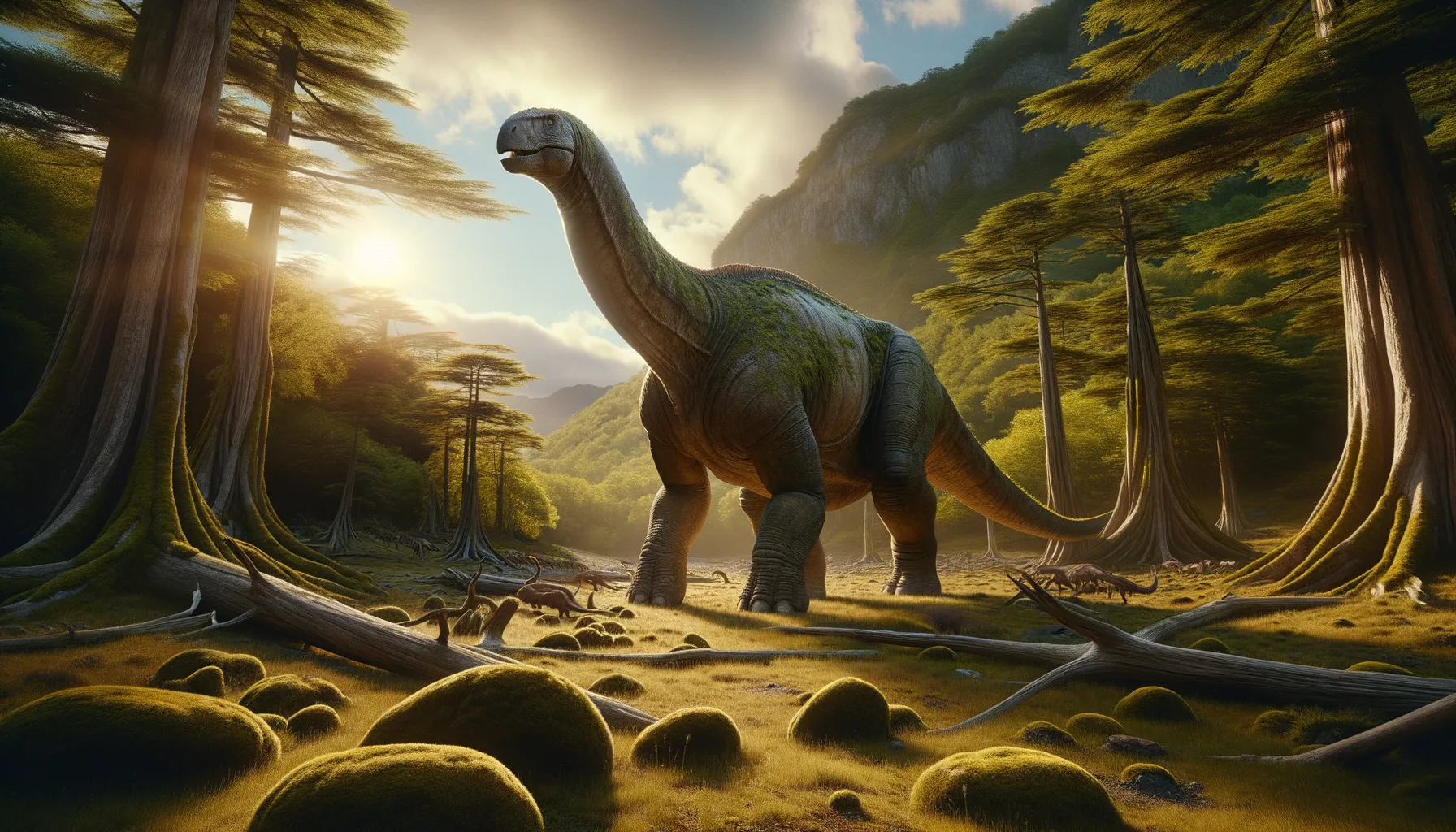
Quetecsaurus
A gentle giant of the ancient world!
Period
Cretaceous
Length
About 20 meters in length.
Height
Around 10 meters tall.
Weight
Weighed approximately 10 tons.
Quetecsaurus was a mighty sauropod dinosaur, dwelling in what is now South America during the Late Cretaceous period. Known for its long neck and tail, it was a giant herbivore that roamed the ancient landscapes. The dinosaur is characterized by its massive size, which provided protection against predators and allowed it to forage high vegetation. Fossils reveal important insights about its size, habitat, and lifestyle during its existence millions of years ago.
Diet
Quetecsaurus was an herbivore, primarily eating plants. With its long neck, it could reach high into trees to feed on leaves and branches. It also grazed on low-lying vegetation, providing it a diverse diet.
Hunting
Being an herbivore, Quetecsaurus did not hunt. Its diet consisted entirely of plant material. It used its height advantage to reach vegetation that other herbivores couldn't access.
Environmental challenges
During the Cretaceous period, Quetecsaurus faced challenges such as climate changes that affected vegetation growth. It had to adapt to seasonal variations in food availability. The presence of large predators also posed a threat, although its size was a natural deterrent.
Speed
Relatively slow due to its large size.
Lifespan
Estimated to live for several decades.
First discovery
Discovered in Argentina in 2005.
Fun Facts
- Quetecsaurus was a massive dinosaur that lived during the Late Cretaceous period.
- It was a sauropod, which means it was a long-necked dinosaur, similar to the well-known Brachiosaurus and Diplodocus.
- Quetecsaurus fossils have been found in the region now known as Argentina, giving us clues about life in South America millions of years ago.
- The name 'Quetecsaurus' means 'Quebrada del Barro lizard', named after the place where its fossils were discovered.
- This dinosaur was an herbivore, feeding on plants, making it one of the gentle giants of the Cretaceous era.
- Quetecsaurus likely roamed in groups, which provided protection from predators and helped in finding food.
- Despite its size, Quetecsaurus would have faced threats from large carnivorous dinosaurs of its time.
Growth and Development
Quetecsaurus likely grew rapidly from a young age to avoid predation. As it reached maturity, its growth rate slowed down significantly. Over time, it developed robust bones and muscles to support its massive body. Its lifespan likely extended into several decades, allowing for a prolonged period of growth.
Habitat
Quetecsaurus lived in lush forests and open plains, where it could find ample vegetation. Its habitat was rich in plant life, with varied species providing abundant food sources. The climate was warmer, supporting the diverse ecosystems in which it thrived.
Interaction with other species
Quetecsaurus shared its environment with various plant-eating and carnivorous dinosaurs. Its size made it less vulnerable to predators, allowing it to coexist peacefully with smaller herbivores. It played a role in shaping the vegetation and contributing to the ecosystem as a large herbivore.
Natural lifespan
Quetecsaurus had a natural lifespan extending over several decades.
Reproduction
Quetecsaurus likely laid eggs in nesting grounds, similar to modern-day reptiles. Females probably produced multiple eggs at once, leaving them in sandy nests. Hatchlings would have been vulnerable, relying on the safety of numbers and quickly growing to evade predators.
Social behaviour
Quetecsaurus may have traveled in small groups or herds for protection. Being in groups allowed them to better forage for food and avoid predators. Social interactions likely centered around communication, cooperation, and possibly migration during different seasons.
Fossil locations
Fossils of Quetecsaurus have been found in Argentina. These findings have contributed significantly to understanding the diversity and distribution of sauropods. The fossils offer vital insight into the environments and lifestyles of dinosaurs during the Late Cretaceous period.
